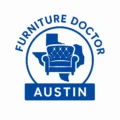Can Leather Be Restored? Here’s What You Need to Know
Leather is known for its durability and classic look — but what happens when it starts to wear down? Can it actually be restored? The answer is: yes, often it can — but not always. In this guide, we’ll break down what’s possible, what’s not, and what to do when restoration isn’t enough.
Table of Contents
- Can Leather Really Be Restored?
- What Can Be Repaired or Restored
- What Cannot Be Restored — And Why
- Panel Replacement: When Restoration Isn’t Enough
- When Full Reupholstery Is the Better Option
- How the Restoration Process Works
- Not Sure? Send Us Photos — We’ll Take a Look
Can Leather Really Be Restored?
Yes — in many cases, leather furniture can be brought back to life. Whether it’s faded from sunlight, scratched by pets, or dried out over time, quality leather responds very well to cleaning, conditioning, and recoloring. But the key is knowing what kind of damage you’re dealing with — and how far it has progressed.
What Can Be Repaired or Restored
Here are common types of leather damage that can be restored by a professional:
- Fading and discoloration: UV damage, stains, or dullness can be corrected with custom leather dye and topcoat.
- Dry or stiff leather: Rehydrated with conditioner and brought back to a supple, soft feel.
- Surface scratches and scuffs: Blended and filled with flexible leather compounds, then recolored.
- Minor cracking: Treated before it deepens, smoothed, and resealed.
- Pet damage: Light claw marks or small punctures can often be patched and textured.
What Cannot Be Restored — And Why
Unfortunately, not all damage is repairable. Some cases require more than just restoration. Here’s what usually can’t be restored effectively:
- Peeling leather: Usually not real leather — often bonded leather or vinyl with a surface film. Once that top layer detaches, it cannot be rebuilt.
- Deep cracks through the material: If the leather is cracking all the way through, it’s structurally compromised.
- Large torn sections: Rips or tears that span seams or panels typically require replacement.
- Delamination or flaking: Often a sign of poor-quality faux leather or coating breakdown — not restorable.
In these cases, our solution is not to patch — but to replace the damaged part.
Panel Replacement: When Restoration Isn’t Enough
When a specific section is too far gone, we often recommend panel replacement instead of a full reupholstery. For example:
- A damaged seat cushion cover can be replaced while keeping the rest of the sofa intact.
- Armrests or headrests with heavy cracking can be rebuilt with new material, color-matched to the rest.
This method saves time and cost — while preserving as much of the original upholstery as possible. Our goal is always to repair only what’s necessary, using expert color matching, stitching alignment, and material selection.
When Full Reupholstery Is the Better Option
In some cases, the damage is too widespread or the leather is too far gone. If multiple panels are peeling, the foam is collapsed, or the entire surface feels brittle — we may recommend a full reupholstery.
This involves removing the old material, repairing the structure if needed, and covering the entire piece with new leather, vinyl, or performance fabric. The benefit? You keep the shape, comfort, and frame you love — but get a brand-new look and feel.
How the Leather Restoration Process Works
- Assessment: We inspect the damage and determine what can be restored vs. replaced.
- Cleaning: Deep clean to remove dirt, oils, and residue.
- Repairs: We fill cracks, blend scratches, rehydrate the surface.
- Color work: Custom-dyed pigment is applied in layers to match or refresh your leather.
- Topcoat: A protective seal is added to lock in the work and extend longevity.
This can be done on-site for minor jobs, or in our workshop for more extensive work — especially when panels need to be removed or replaced.
Not Sure? Send Us Photos — We’ll Take a Look
If you’re wondering whether your leather can be restored, the best way to find out is to send us a few photos. Wide shots and close-ups help us assess the damage and recommend the best path — restoration, panel replacement, or full reupholstery.
Furniture Doctor Austin — Leather Repair and Restoration Services in Austin, TX and surrounding areas.
